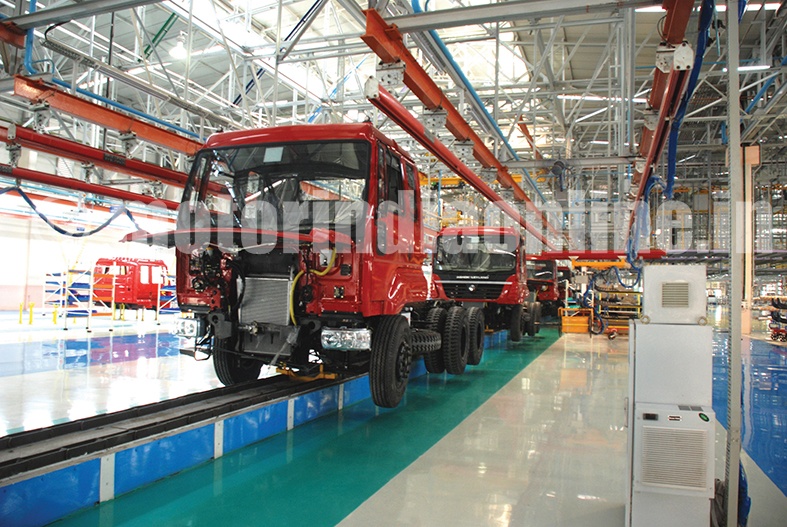The automotive industry is a reflection of the growth and development of the economy. It enables socio-economic development through transportation of goods, and mobility of people. It exemplifies the dreams and aspirations of the people of a country.
From the first car to run on the road, more than a century ago, the Indian automotive industry has certainly come a long way. Today, we have annual sales of more than 20 million vehicles. There are more than 40 players, including most global players, operating in the Indian automotive market, offering a wide variety of products ranging from motorcycles, to scooters, to passenger cars, SUVs, pick-ups, tractors, buses, all the way to heavy trucks.
Post-Independence and uptill 1982, the industry was primarily a seller’s market with just five players – Ashok Leyland, Tata Motors, Mahindra, Bajaj Auto and Hindustan Motors – making products with relatively out-dated technologies and having licensed production capacities.

During the mid-1980s, with the opening up of the sector, we had Japanese companies like Honda, Suzuki, Kawasaki and Yamaha and Korean companies like Hyundai and Daewoo coming to India through joint ventures and partnerships. This effectively ended the license-raj and opened the market for consumers, giving them more product choices, affordable vehicles, shorter waiting times and access to newer technologies. Through the liberalisation decade of the 1990s, we saw a rapid growth in both personal and public transportation. The automotive industry drove the wave of growth in the Indian economy, fuelling the dreams of the rising middle class.
Over the last decade, with the increase in foreign holding limits, the industry saw a rapid transformation. A large number of global players like Daimler Benz, BMW, Audi, Ford, General Motors, Harley Davidson, etc., invested in the growing Indian market. This increased competition, brought in world-class products, technology, manufacturing processes and customer service for the Indian customer. The industry has witnessed a CAGR growth of 8.7%. Passenger vehicles grew by 9.3%, commercial vehicles by 6.9% and two/three-wheelers by 8.8% and 4.1% respectively.
Today, India is the fifth largest market for passenger vehicles, fifth largest for commercial vehicles and the second largest for two-wheelers in the world. The car ownership in the country has doubled from less than 10 per thousand a decade ago to about 20 per thousand today. The industry accounts for an annual turnover of Rs. 6,12,361 crores (estimated) and contributes to over 49% of the manufacturing GDP and 7.1% of the overall GDP. The industry has developed deep horizontal and vertical linkages making it the engine of growth for the manufacturing and services sectors in the country and providing employment to 31 million persons directly or indirectly.
Not just in manufacturing, India has also become a preferred destination for automotive R&D. Today, India accounts for over 10 per cent of the global R&D headcount. With a significant talent pool India is poised to become a global auto R&D hub. With research emphasis on telematics, connected vehicles and engine electronic controls, the Industry will also contribute significantly to the “Digital India” initiative.
In the coming decade, the industry is expected to grow rapidly and aspires to become the world’s largest producer of small cars, two-wheelers, three-wheelers, tractors and buses and the third largest in passenger vehicles and heavy trucks. It will play a pivotal role in the Government’s ‘Make in India’ and the ‘Skill India’ programme and provide livelihood for an estimated 65 million additional people.
In order for us to achieve these aspirations, the Government and the industry have jointly formulated the Second Automotive Mission Plan 2016-26, which lays down a clear road-map and vision for the industry during the next decade in terms of size, contribution to India’s development, global footprint, technological maturity, and competitiveness. It also defines the trajectory of evolution of the automotive ecosystem in India, including the glide-path of specific regulations and policies that govern research, design, technology, testing, trade, manufacturing, and obsolescense of vehicles.
One of the challenges we face is the skill gap in India, especially in automotive-electronics, product design and engineering. The vehicles of the future will have more electronics in them, and there will be a drive towards new/lighter materials, battery/hybrid technologies, and emission controls. We need to grow capabilities beyond our current strength of manufacturing and put more emphasis on design and engineering based on the new technologies, which form the basis of competitive advantage on the global stage.
The other challenge is in the form of negative externalities such as urban congestion, road accidents and air/noise pollution. To address these, we need to develop a healthy balance between personal vehicles and public transport solutions. We also need to put emphasis on development of affordable emission control mechanisms in a timely and cost-effective manner. We have been the fastest in adoption of safety and emission norms in the world, but still lag behind the Western world due to lack of proper fuel. With the Government offering Euro-6 fuel from 2020, the industry has accepted the challenge of developing Euro-6 vehicles in as little as three years, something that has taken more than a decade in Europe.
Given the long lead times and high investments required, it is critical for us to ensure the stability and predictability of the policy environment. Pressures from external agencies often tend to cloud the opinion of the policy maker and the judiciary into taking hasty decisions on issues that need to be carefully considered from multiple angles. Knee jerk reactions usually never achieve the desired results but certainly vitiate the business sentiment and hurt the investment environment.
We would do well to always remember the Prime Minister’s clarion call for “Make in India” before we attempt any course corrections midway.
We need to recognise the distinctive contribution of the Indian automotive industry to the socio-economic development of the country and more so its contribution to responsible growth that takes into account the impact of issues like environment, climate change, safety and energy security of the country. It is therefore imperative that the Government, the industry and other interest groups work together to develop a comprehensive and constructive policy framework to govern it in a stable and sustainable manner.
I am confident that the automotive industry will grow from strength to strength and will catapult India on the manufacturing map of the world.
By Vinod K Dasari, SIAM President, and Managing Director, Ashok Leyland
